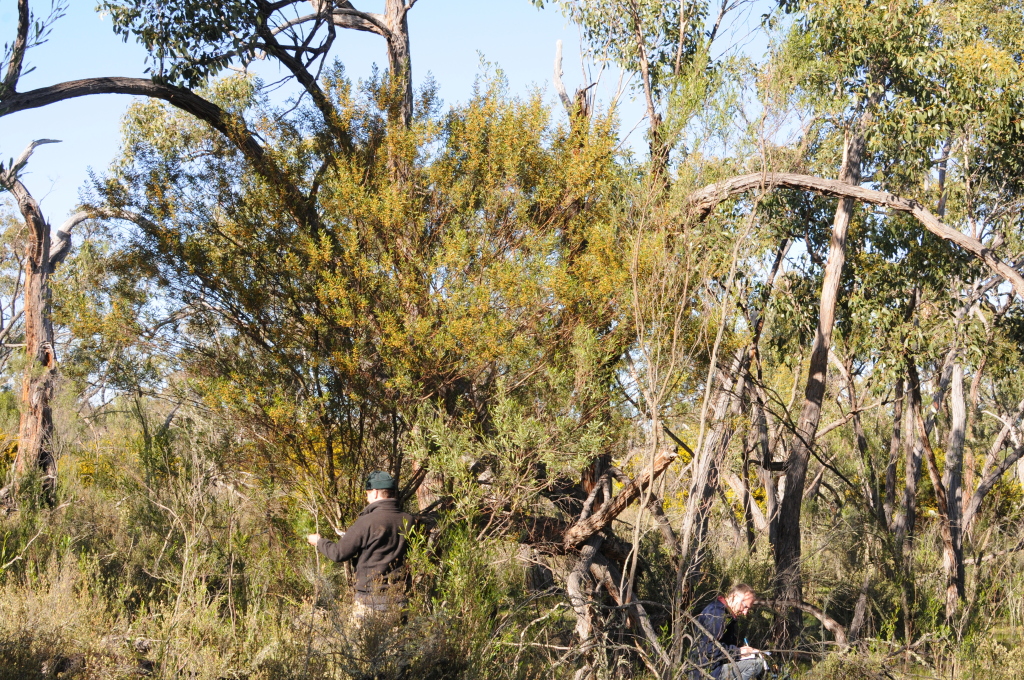Acacia dodonaeifolia
(Pers.) Balb. Sticky WattleViscid, glabrous shrub or tree, 2–6 m high; branchlets shiny when young, ribs minutely tuberculate. Phyllodes usually narrowly elliptic or oblanceolate (sometimes oblanceolate), 4–8 cm long, 5–10 mm wide, straight to shallowly incurved, obscurely and minutely punctate, slightly roughened, often sparsely tuberculate, glabrous; midrib prominent, lateral veins obscure, oblique, frequently coalescing distally to form an almost continuous intramarginal vein; glands 2–3, lowermost 0–5 mm above pulvinus, the others often slightly raised. Peduncles 7–16 mm long, glabrous, basal bract persistent, 2 per axil or in 2-headed racemes with rachis to 5 mm long; heads globular, 36–46-flowered, bright yellow. Flowers 5-merous; sepals united. Pods linear, to 13 cm long, 5–7 mm wide, thinly coriaceous, light brown; seeds longitudinal, oblong-elliptic, 4.3–5 mm long, shiny, dark brown, aril folded at end of seed.
LoM, Wim, GipP, DunT. Also SA. Formerly believed to be a garden escape, but a reconsideration of the records suggest this is a naturally occurring species in Victoria.
Similar to A. leprosa but distinguished by its tuberculate branchlet ribs and its rougher phyllodes with 2-3 glands.
Acacia dodonaeifolia hybridises with A. paradoxa in South Australia.
Entwisle, T.J.; Maslin, B.R.; Cowan, R.S.; Court, A.B. (1996). Mimosaceae. In: Walsh, N.G.; Entwisle, T.J., Flora of Victoria Vol. 3, Dicotyledons Winteraceae to Myrtaceae, pp. 585–658. Inkata Press, Melbourne.
 Spinning
Spinning

